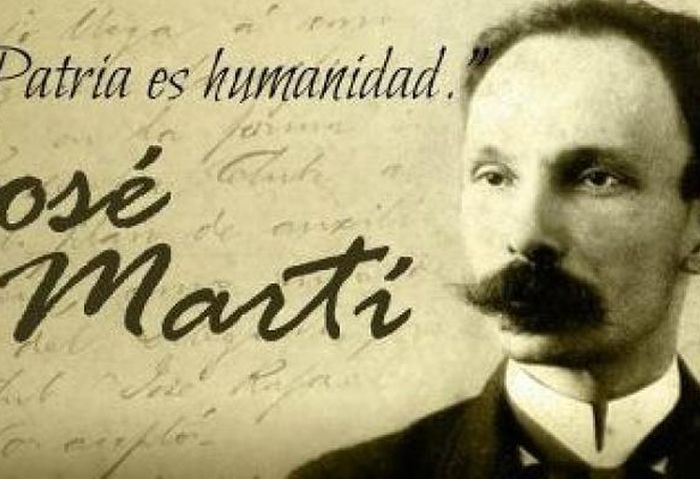Cultural institutions, work places, schools, youth organizations nationwide honor José Martí through initiatives to promote and disseminate his legacy.
Among the tribute activities, the traditional March of the Torches and pilgrimage of thousands of Cuban students were held on Friday, attended by the leader of the Cuban Revolution Raúl Castro and the Cuban President Miguel Díaz-Canel.
The mass walk takes place from the steps of the University of Havana to the Martí Forge, place where Martí spent several months after being sentenced to hard labor by the Spanish colonial regime in 1870.
The 5th International Conference For the World Balance, a conclave hosting several debate forums where the magnitude of Martí´s work and his concerns for the future of humanity was also held at the Havana International Conference Center (HICC).
According to Eduardo Torres, director of Martí Program Office, the event reaffirms Martí´s anti-imperialist thought.
He recalled that Martí “saw the birth of the empire, but he also saw the problems of the Third World peoples, particularly those of Latin America, and above all, he understood that in Cuba’s independence lay in the world balance”.
Martí in the hearts of Latin American and the Caribbean peoples
The distinguished Cuban patriot, writer, and journalist José Martí (1853-1895) is being remembered this Friday in different parts of Latin America and Caribbean geography, a few hours before the 170th anniversary of his birth (January 28).
The Cultural Center that bears the name of Cuba’s National Hero, in the Alameda Central, was the scene of a ceremony in front of the statue that immortalizes him, considered the largest full-length statue outside his native country.
Dozens of Mexicans and Cubans gathered to celebrate the event. The evening was attended by the Secretary of Culture and Arts of the National Directorate of the Morena party, Tomás Pliego; the head of Culture of the City Government, Claudia Curiel, and leaders of the Mexican Solidarity Movement and the José Martí Association of Cubans living in Mexico.
Pliego and Curiel praised Martí’s political thought and work, and recalled that his best friend, Manuel Mercado lived in that nation.
Both speakers highlighted the coincidences of Martí’s thought with the most contemporary revolutionary milestones in Mexico, and the ideals of the IV Transformation of the government presided over by Andrés Manuel López Obrador.
The closing ceremony was in charge of Ambassador Marcos Rodríguez, and quoting the stay of the most universal Cuban in those lands, said that with his thought and guidance also set sail the expeditionaries of the Granma yacht, from Tuxpan, on November 25, 1956, with Fidel Castro Ruz (1926-2016), at the helm.
Meanwhile, in the park named after José Martí, in Orotina, province of Alajuela, Costa Rica, the validity of Martí’s work and his imprint in that Central American nation were also highlighted.
The second deputy mayor of Orotina, Luis Valverde said in a political-cultural act that “every year life allows us to come to this bust to savor and feel Marti’s legacy, which we have in our Orotina identity”.
The mayor of Orotina, Benjamín Rodríguez, emphasized that his canton has always welcomed with great honor this activity of remembrance to Martí.
Meanwhile, in the Dominican Republic, nationals and Cubans paid tribute to the Apostle of the independence of the Island, in the city of Montecristi, a province of the same name.
The event took place where the Master and General Máximo Gómez signed ‘The Manifesto of Montecristi’, and was attended by members of the Cuban embassy in the Dominican Republic, headed by Consul Enith Pérez, authorities of the city and the province, members of the Dominican Solidarity Campaign, and students.
In the tribute, several speakers highlighted the figure of Martí and the meaning of the Manifesto. He was remembered with songs and poems and finally, a wreath was placed in front of his bust and that of Gómez.
Also, on the eve of January 28, the Ecuadorian Coordinator of the Movement of Friendship and Solidarity with Cuba remembered the National Hero of the Caribbean nation with the publication of its bulletin Cuba Sí.
According to scholars, the Maestro was an excellent politician, orator, journalist, educator, diplomat, poet, and man of letters and sciences who always had a Latin Americanist and anti-imperialist vision.
In Argentina, this Friday, members of the diplomatic and state mission of Cuba in the southern country paid tribute to the most universal of Cubans for the 170th anniversary of his birth.
During a ceremony at the embassy of the Caribbean nation in Buenos Aires, those present dedicated a bouquet of white flowers to the patriot and highlighted the validity of his work.
Our goal today must be to continue creating and giving our best from every position,” said Councilor Dagmara Calzada.
She also urged to continue defending the Revolution and strengthen the struggle for the lifting of the economic, commercial, and financial blockade imposed by the United States on Cuba for more than six decades.
 Escambray ENGLISH EDITION
Escambray ENGLISH EDITION





Escambray reserves the right to publish comments.